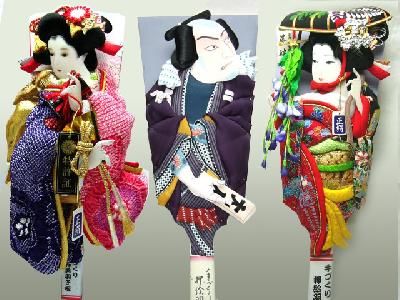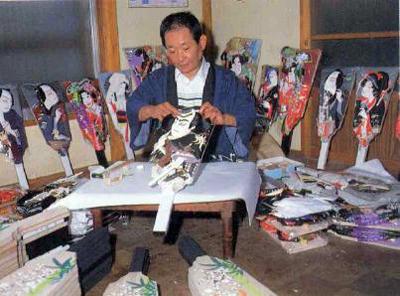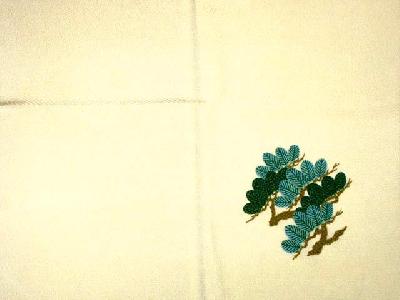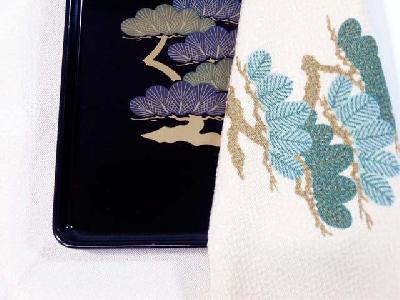|
Hagoita, or kogiita as they were known in olden times, were used as decorative battledores or presented as New Year gifts. Hagoita were believed to repel evil, and had connotations of healthy growth.
In the late Edo period, a Chinese technique called 'oshi' was first used for hagoita. A design is made, then cardboard is tacked against a board, which is covered with cloth to give a 3-d effect.
At that time, the merchant Edo culture had entered a mature stage with the creativity of ukiyo-e, woodblock prints of popular subjects. Like ukiyo-e, hagoita featured similar designs with portraits of Kabuki actors being very popular. At the annual year-end fairs in Edo, many people bought hagoita with portraits of popular actors.
Even today, beautiful hagoita make a popular gift to bring luck at New Year or to be presented as a special gift.
In the late Edo period, a Chinese technique called 'oshi' was first used for hagoita. A design is made, then cardboard is tacked against a board, which is covered with cloth to give a 3-d effect.
At that time, the merchant Edo culture had entered a mature stage with the creativity of ukiyo-e, woodblock prints of popular subjects. Like ukiyo-e, hagoita featured similar designs with portraits of Kabuki actors being very popular. At the annual year-end fairs in Edo, many people bought hagoita with portraits of popular actors.
Even today, beautiful hagoita make a popular gift to bring luck at New Year or to be presented as a special gift.
| [+ADDRESS] | 
|















